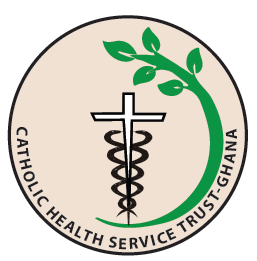The Catholic Health Service Trust (CHST) is a private not for profit healthcare provider, owned by the Catholic Church in Ghana.
The institutional health facilities (i.e. hospitals and clinics) of the CHST began in the early 1950’s at a time when there was an urgent need to provide such facilities for rural dwellers who had virtually no access to modern orthodox health care and often requested for them. Expatriate missionary professional staff supported by local auxiliary workers introduced and manned these institutions at the time. Thus all the hospitals of the CHST started as little clinics and primary health care facilities.
By the 1960’s services were expanded and/or introduced to include Mobile Clinic services, Natural Family Planning services, Primary Health Care services, Diocesan Pharmacies and Rehabilitative services. Maternal and Child Health care was also intensified and further improved.
Its official structure as Catholic Health Service began in 1964 when the Ghana Catholic Bishops Conference set up the Department of Health (now “Directorate of Health”) of the National Catholic Secretariat. The then Department’s mandate was to:
1. ensure that Catholic health care services reach remote and rural areas of Ghana where people then without basic health service; and
2. ensure that then existing Catholic Health Facilities were effectively supported in management.
The Conference also set up a National Catholic Medical Advisory Board to advise the Department. By 1973 a full-time Executive Secretary, (Rev. Sr. Ancilla Fox, SSL) was appointed to coordinate the work of the Catholic Hospitals in Ghana.
In 1977, the first Policy of the church health service was developed and adopted in a document entitled “The Church’s Role in Health Care”. This Policy led to changes that brought about increased cooperation and coordination of the institutions, which had hitherto worked almost independent of each other.
Further to the proposed changes, a National Catholic Health Council was inaugurated in May, 1977 to replace the National Catholic Medical Advisory Board. By this time, the Catholic Health Service comprised 26 hospitals, 30 clinics, 3 Nursing Training Colleges and 3 midwifery Training colleges. The Department also had four units apart from the Executive Secretary’s office namely:
Ø Coordinating Unit for Hospitals and Clinics
Ø Primary Health Care Unit
Ø Natural Family Planning and Family Life Education Unit and
Ø Catholic Drug Centre
The Ministry of Health granted official permission for the Church to start Primary Health Care in 1980. Prior to this, the Hospitals and Clinics were already involved in home-based care and intense outreaches to villages around their locations, each one providing basic care in what was most needed by each community served. The Catholic Drug Centre (now Catholic Medicines Centre) was also established under the management of the Department in 1981.
Minimal user fees had always been charged for accessing services by Church institutions to cover cost of medicines, other inputs as well as salaries of staff. Development partners and some missionaries supported the funding of budgets of the institutions.
The Department had the following development partners who supported various aspects of the work of the Catholic Hospitals from the early 1970s to the 1980s: CEBEMO (Holland); MEMISA (Holland); BEGECA (Germany); MISEREOR (Germany); CARITAS (Italy); HELP THE AGED (UK); CAFOD (England); AUSTRALIAN CATHOLIC RELIEF (Australia); TROCAIRE (Ireland); and KNIGHTS OF MALTA (Malta).
The 1977 Policy was reviewed and replaced with another “The Policy of the Catholic Church on the Role and Functions of the Church in Health Care Delivery System in Ghana”. It was adopted in July 1993 to guide the way forward for the Service. This document recognized that more Ghanaian professional staff were now in the employ of the Church Health Service; the cost of services had become prohibitive; more government support was being accessed under a special arrangement between the Church and government; and more resources were still required. By this time, there was better collaboration among the institutions but a greater need for stronger cooperation and coordination of the Church’s health service with better well-defined approaches and goals was required.
In response to rising cost of care, and in their quest to remove the financial access barrier, some facilities started their own mutual health insurance schemes in the Brong-Ahafo region, where Catholic institutions are the predominant care givers. The notable one is the Nkoranza Scheme which was launched in 1992 with remarkable success. The fact of its establishment in a rural and semi-urban setting with remarkable results, encouraged government to introduce the National Health Insurance Scheme having modified the design of these schemes.
The Service reviewed the 1993 Policy in 2003 which received approval from the Ghana Catholic Bishops Conference and effectively created the National catholic Health Service with mandate to coordinate Catholic health care provision in Ghana. The Policy had 7 thematic goals which have been the bedrock for planning services at all the levels of the service since as follows:
Identity; Management; Human Resources for Health; Service Delivery; Drugs and Therapeutics; HIV/AIDs; Health Financing; and Health Research.
